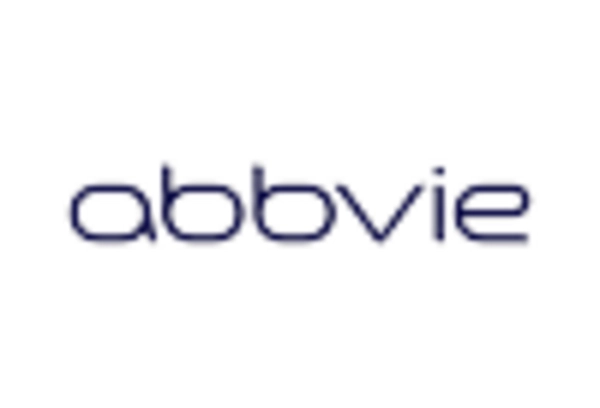Rising Healthcare Expenditure
The increase in healthcare expenditure across various regions is likely to bolster the Shigellosis Gastroenteritis Treatment Market. As governments and private sectors allocate more funds towards healthcare, the availability of resources for the treatment of infectious diseases, including Shigellosis, improves. This financial commitment can lead to enhanced healthcare infrastructure, better access to medications, and improved patient care. Reports indicate that healthcare spending has been on the rise, with many countries investing in disease prevention and treatment initiatives. Consequently, this trend may facilitate the development and distribution of effective treatment options for Shigellosis, thereby expanding the market.
Advancements in Treatment Modalities
Innovations in treatment modalities represent a significant driver for the Shigellosis Gastroenteritis Treatment Market. Recent developments in antibiotic therapies and supportive care have shown promise in effectively managing Shigellosis. For instance, the introduction of new antibiotics that target resistant strains of Shigella could enhance treatment outcomes. Additionally, the integration of supportive therapies, such as rehydration solutions, is gaining traction. According to recent data, the market for antibiotics specifically targeting Shigellosis is projected to grow at a compound annual growth rate of approximately 5% over the next few years. This trend indicates a shift towards more effective and targeted treatment options, which may attract both healthcare providers and patients.
Emerging Markets and Population Growth
The emergence of new markets and population growth are significant factors influencing the Shigellosis Gastroenteritis Treatment Market. As populations expand, particularly in developing regions, the incidence of Shigellosis is likely to rise due to factors such as inadequate sanitation and healthcare access. This demographic shift presents opportunities for pharmaceutical companies to introduce effective treatment solutions tailored to these markets. Additionally, the increasing urbanization in these regions may lead to higher exposure to pathogens, further driving the demand for Shigellosis treatments. Consequently, the combination of population growth and emerging markets is expected to create a robust demand for innovative treatment options in the coming years.
Growing Focus on Infectious Disease Control
The Shigellosis Gastroenteritis Treatment Industry. Governments and health organizations are increasingly prioritizing the management of infectious diseases, including Shigellosis, due to their public health implications. Initiatives aimed at improving sanitation, hygiene, and vaccination programs are being implemented to reduce the incidence of Shigellosis. This focus on prevention and control is likely to create a conducive environment for the development of new treatment options. Furthermore, as the burden of infectious diseases continues to rise, the demand for effective treatments is expected to increase, thereby driving market growth.
Increasing Awareness of Shigellosis Gastroenteritis
The rising awareness regarding Shigellosis Gastroenteritis is a pivotal driver for the Shigellosis Gastroenteritis Treatment Market. Educational campaigns by health organizations have led to a better understanding of the disease, its transmission, and prevention methods. This heightened awareness is likely to result in increased demand for treatment options, as individuals become more proactive about seeking medical assistance. Furthermore, the World Health Organization has reported a notable increase in the number of diagnosed cases, which may further fuel the need for effective treatment solutions. As healthcare providers become more informed about the disease, they may also be more inclined to prescribe appropriate therapies, thereby contributing to market growth.


















Leave a Comment